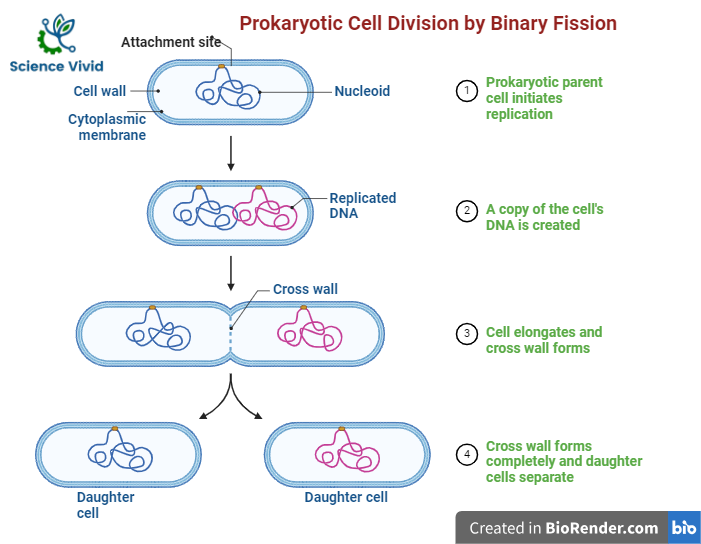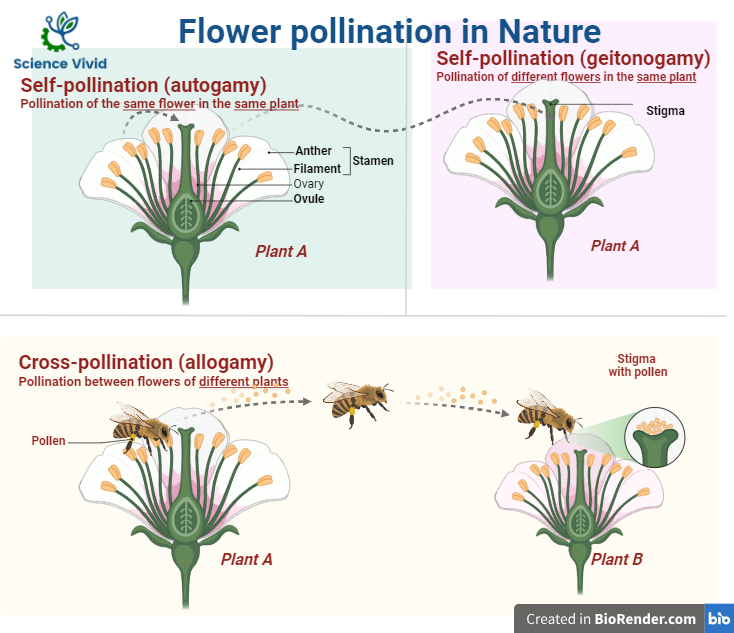Introduction:
Reproduction is an integral feature of all living beings by which a living being produces produce new individuals of the same species. This natural process is necessary for the survival and increase in the population of a species. If organisms do not reproduce, their population decreases and species will become extinct.
Importance:
- It is critical for all species because it is the only way for a living entity to continue its ancestry.
- Significantly, it contributes to evolution by passing on advantageous traits from one generation to the next.
- In addition to being crucial for a specific individual, reproduction is also incredibly important for the overall environment.It contributes to the maintenance of an appropriate balance among the ecosystem’s many biotic constituents.
- Furthermore, it promotes evolution by allowing differences to spread throughout multiple generations. It ensures the continuation of a species from generation to generation.
Types:
There are mainly two types i.e., asexual and sexual reproduction.
Asexual reproduction
It is the mode of reproduction where there is no formation of gamete and a single parent is involved for the production of offspring. Furthermore, no meiosis happens during asexual reproduction.
Sexual Reproduction
It is the mode of reproduction where there two parents are involved for the production of offspring and gamete formation take place accordingly. Furthermore, meiosis always plays a crucial step in sexual reproduction.
Reproduction in simple organisms:
Binary fission
Most of the unicellular animal prefer this method for reproduction. These organisms reproduce by binary fission, especially when conditions are favorable, i.e., adequate amount of food and moisture is available. Binary fission is somewhat similar to mitosis. The mother cell divides into two daughter cells, each of which begins life as a new individual. Following binary fission, the parent generation fails to exist. Amoeba and Paramaecium are a very good example of the organism which reproduces by binary fission.

Fig: Reproduction in simple organisms ( Binary Fission)
Multiple Fission
It is one of the preferred modes of reproduction by unicellular when the conditions become unfavorable, i.e., food, moistures, proper temperatures, etc. are not available. Cyst is developed in the organism which is a thick coating around itself that helps the organisms to overcome and withstand the unfavorable conditions. The nucleus divides into several nuclei and each daughter nucleus are surrounded by a membrane. All metabolic activities stop in organism after cyst formation. Subsequently, when favorable conditions return the cyst dissolves or breaks down; releasing the daughter nuclei. The daughter nuclei; in turn; grown into new individuals. Plasmodium (Malarial parasite) and entamoeba under cyst stage, when they are not the body of their prime host, i.e., humans.
Budding
In this method a bud like projection is formed on the anatomical point of the parent organism that will develop into a new individual and will then separates from the parent and forms an independent individual. E.g.: – Hydra, Yeast etc.
Yeast is an example of unicellular organism which reproduces by budding whereas hydra is a multicellular organism which reproduces by this method.
Budding in yeast- A tiny bud formed at any end of the yeast cell. The nucleus elongates and protrudes into the bud. The nucleus then separates into two nuclei. One of the nuclei moves into the bud, it will grow to a certain extent and eventually separates from the mother cell.
Budding in Hydra- A bud may develop anywhere on the main body of a hydra. The bud grows to a specific size and then separates from the mother hydra. This progresses further, transforming into a new individual.

Fig: Budding in yeast
Fragmentation
Reproduction by fragmentation is seen observed in filamentous algae, e.g., spirogyra (a type of green algae). Spirogyra filaments separate into several fragments, each of which develops into a new individual.
Regeneration
Some basic creatures have the ability to regenerate a new individual from an inadvertently severed portion. Planaria are an excellent example of regenerative reproduction. If a planaria is divided into pieces, each component grows into a new individual. Lizards can regrow their tails, starfish can regenerate their arms, and humans can partially restore their livers.
Spore Formation
Most of the fungi, bryophytes and pteridophytes reproduce by this mode of reproduction. Spores are formed in unique spore-bearing organs known as sporangium. When the spores mature, the sporangium bursts open to release them. Spores provide specific survival benefits to organisms that reproduce using spores. Spores can spread by the air, water, and even other carriers, such as animals. This allows an organism to expand its presence over a larger geographic area. Spores can also remain latent for a long period until suitable conditions are found. Scientists believe that spores are the ancestors of seeds.
Vegetative Propagation:
Vegetative propagation is a unique situation, as it occurs in higher plants that are ordinarily capable of sexual reproduction. Vegetative propagation is the process by which a vegetative portion of a flowering plant generates a new plant.
Carrot, sweet potato, potato, ginger, and turmeric are a few examples of modified subterranean stems used to store food. When buried under soil, these contain nodes, internodes, and scaly leaves, which generate a new plant. Similarly, the potato eye can sprout into a new potato plant.
Humans have grown several plants by artificial vegetative propagation. This has enabled farmers and horticulturists to produce more plants in less time, allowing them to earn more money while also developing new plant kinds. Artificial vegetative propagation is most commonly accomplished through stem cutting, layering, and grafting techniques.
Sexual reproduction and variations:
Two parents are required for sexual reproduction, as is the generation of gametes. Gametes are unique cells that arise following meiosis. There are two types of gametes: males and females. The gametes have haploid chromosomes. When gametes merge during fertilization, the number of chromosomes increases to diploid. This is critical for preserving the distinct identity of a certain species that reproduces sexually.
Sexual reproduction involves the offspring receiving sets of genes from two different individuals. This resulted in modest variations throughout successive generations. These changes accumulate over thousands of generations, and they may eventually give rise to a new species. This is how all complex organisms arose from a single common ancestor.
Sexual reproduction in flowering plants:
Flower is a modified leaf which bears special organs and play a role of the reproductive system in plant.
Structure of a typical flower
A typical flower is composed of four different parts: i.e., calyx, corolla, androecium and gynoecium.
Calyx: The outermost whorl of the flower is called calyx, composed of green leaf structure called sepals.
Corolla: The second whorl of the flower is called corolla, composed of colorful leaf like structure called as petals. It is colorful so that insects and birds can be attracted to assist the flower in pollination.
Androecium: This is represented as the third whorl in the flower that is composed of stamens. Stamen is made of a slender stalk and anther on top. Anthers produce the pollen grains. Pollen grains are the male gametes.
Gynoecium: This whorl is at the center of flower. It is composed of a swollen base called ovary. A thin style stands upright on the ovary. It has a flat top called stigma. Ovules are inside the ovary. Ovules are the female gametes.
Pollination
Pollination, an essential element of plant reproduction, is the process of transferring pollen grains from the male anther of a flower to the female stigma that results in fertilization. It is known as self -pollination if the pollen grains from the same flower or the same plant are transferred to the stigma. Whereas, if the pollen grains are transferred from different plant to the stigma, it is called cross- pollination which is better from the perspectives of variations. Many agents help plant in cross pollination, e.g., insects, animals, air, water, etc. In fact, insects are the main pollinators for the plant kingdom.

Fig: Structure and types of pollination in flower
Fertilization
Fertilization is the union of two gametes, in which paternal sperm nucleus is fused with a maternal egg nucleus to form the primary nucleus. The product of fertilization is called zygote that undergoes multiple rounds of mitosis and develops into an embryo. Subsequently, the embryo will develop into a new individual.
Fertilization in flowering plant
After settling on the stigma, pollen grains collect moisture and germinate. A pollen grains develops a pollen tube which penetrates through the tissue of the style and reached the ovule. Pollen nuclei are transported through the pollen tube. After fertilization, zygote is formed which finally develops into the embryo.
Changes in flower after fertilization
The calyx and corolla wither and fall off, as do the stamens. The ovary turns into the fruit. The embryo turns into the seed. Once the seed matures, the fruit dries up, allowing seeds to disperse.
Structure of seed:
A seed contains an embryo, some reserve food is enclosed by a protective covering called a seed coat. The embryo has two pointed parts. The upper part is called plumule which give rise to the shoot system. The lower part is called a radicle which give rise to the root system.
The reserve food is stored in the cotyledons that supply food when the embryo needs it during germination. Seed germination is the process by which the embryo within the seed begins a new life.
